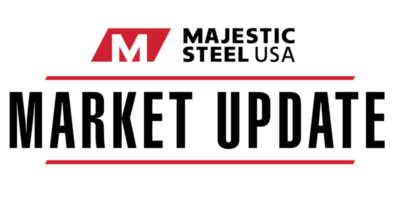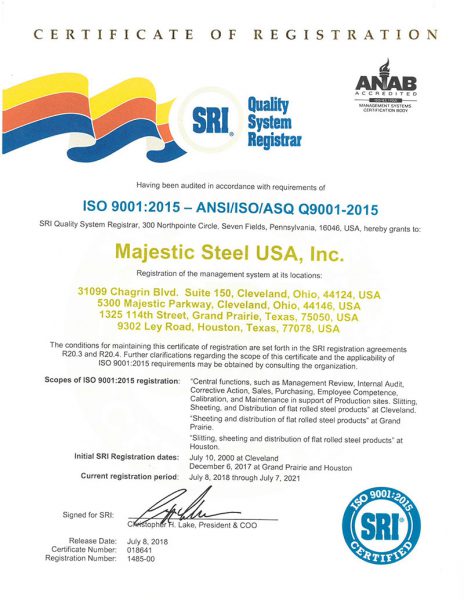Market Update | November 30, 2022
DOMESTIC MILLS INCREASE PRICING
Domestic suppliers announced increases that will raise current spot market base prices for all carbon hot rolled, cold rolled, and coated steel products by a minimum of $60 per ton. The increases are effective immediately with all new orders. This is the first price increase announcement since the end of August as the domestic producers look to put an end to the year-plus long downward pricing cycle.
Input Costs
As the recent up and down movement for zinc continues, pricing slipped slightly this week after climbing the previous two weeks.
-
-
Zinc pricing came in at $1.33/lb this week, down slightly from $1.35/lb previously.
-
Spot iron ore pricing rebounded sharply this week, climbing back above $100.00/mt to $101.25/mt.
-
-
This is up 7.5 from the end of the last week and is up 27.4% on a m/m basis.
-
Pacific Basin met coal pricing declined again this week, sliding to $248/mt.
-
-
Current pricing is down 5.1% from the end of last week and is down 17.4% from this time last month.
-
Supply
U.S. raw steel production declined further last week, sliding to a fresh two-plus year low.
-
- U.S. steelmakers produced 1.625 million tons at an 72.8% utilization rate.
- Production last week was down 11.1% compared to the same week last year and YTD production is now down 5.2% from the same the last year.
Based on preliminary import license data, the daily average (28 days) shows flat rolled steel imports were down 14.8% compared to the same timeframe in October.
Carbon flat rolled imports increased slightly in total but were down on a daily rate as well.
-
- Carbon flat rolled imports totaled 504,160 tons (16,263 tons/day) in October, down from September and down sharply (47.4%) from a 30,912 tons/day rate in October 2021.
- All three flat rolled product’s daily import rate saw a sharp year over year decline in October, as hot rolled, cold rolled, and coated flat rolled imports saw 70.2%, 4.1%, and 31.5% declines respectively.
- Coated flat rolled imports came in at a 7,427 tons/day rate in October, its slowest daily rate since Q1 2021.
- Year-to-date carbon flat rolled imports are now down 5.3% compared to the same timeframe last year.
ECONOMIC
After slipping in October, the Conference Board’s Consumer Confidence Index declined again in November.
-
-
The November Index came in at 100.2, down from 102.2 in October.
-
The Present Situation Index declined to 137.4, down from 138.7 previously.
- The Expectations Index declined as well, slipping from 77.9 to 75.4 in November.
- The expectations index is based on a short-term outlook for income, business, and labor.
- Rising inflation and increased interest rates continue to impact consumers sentiment around making big-ticket purchases like homes, cars, and appliances.
-
After declining the previous two quarters, the U.S. economy expanded in Q3.
-
- The second estimate of Q3 2022 GDP showed a 2.9% annual growth rate, up from the initial estimate of 2.6% growth.
- This second estimate reflected upward revisions to consumer spending and nonresidential investment.
- These were partly offset by downward revisions to inventory investment.
- Imports, which is a subtraction to GDP, declined more than initially thought.
- Overall, in Q3, GDP reflected increases in exports, consumer spending, nonresidential investment, state and local government spending, and federal spending.
- These increases were offset by declines in residential investment and inventory investment.
This material, information and analyses (the “Content”) may include certain statements, estimates and projections prepared with respect to, among other things, historical data and anticipated performance. Content may reflect various assumptions by Majestic Steel USA, Inc. concerning anticipated results that are inherently subject to significant economic, competitive and other uncertainties and contingencies and have been included for illustrative purposes. Content is provided AS-IS.

